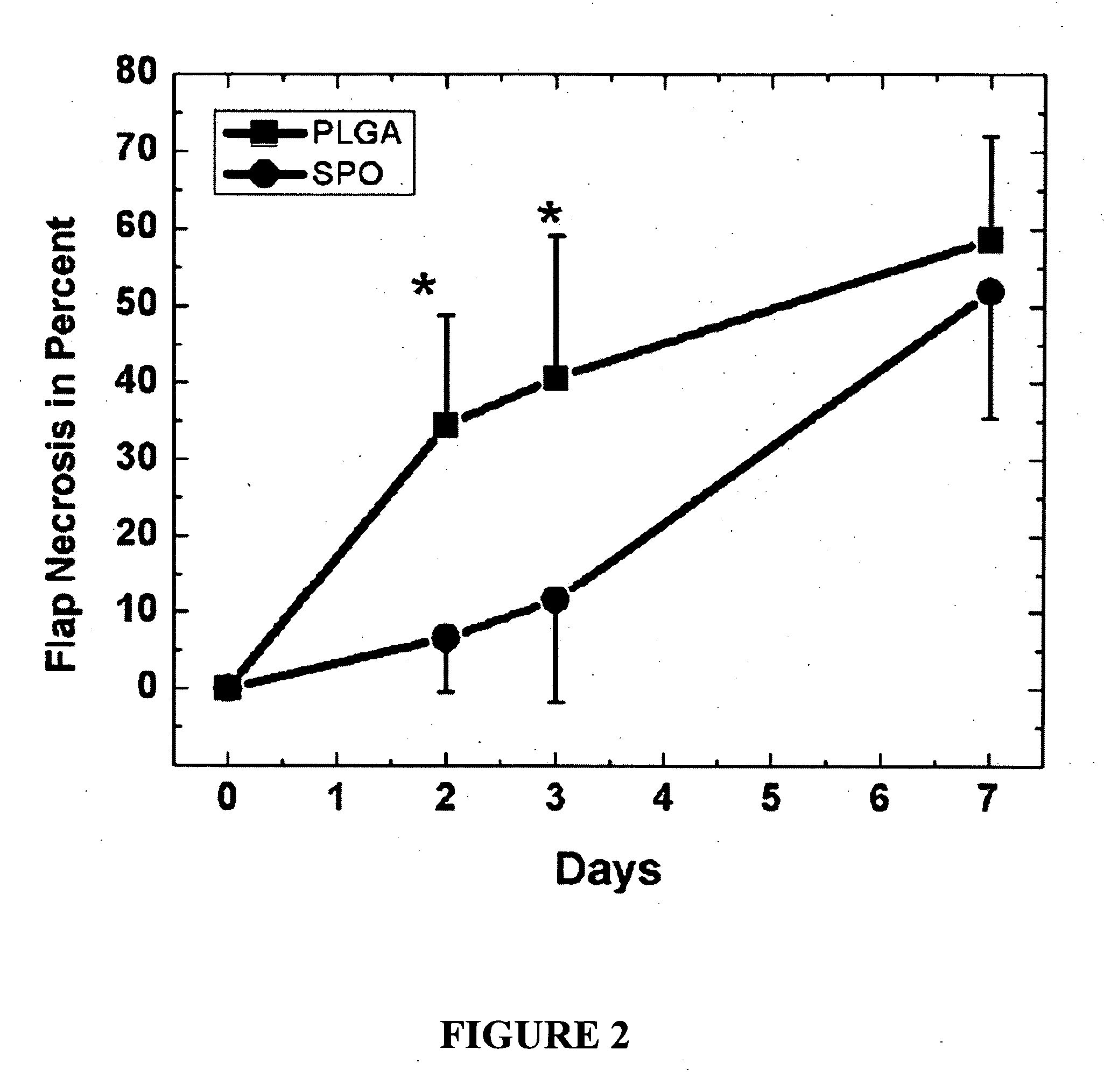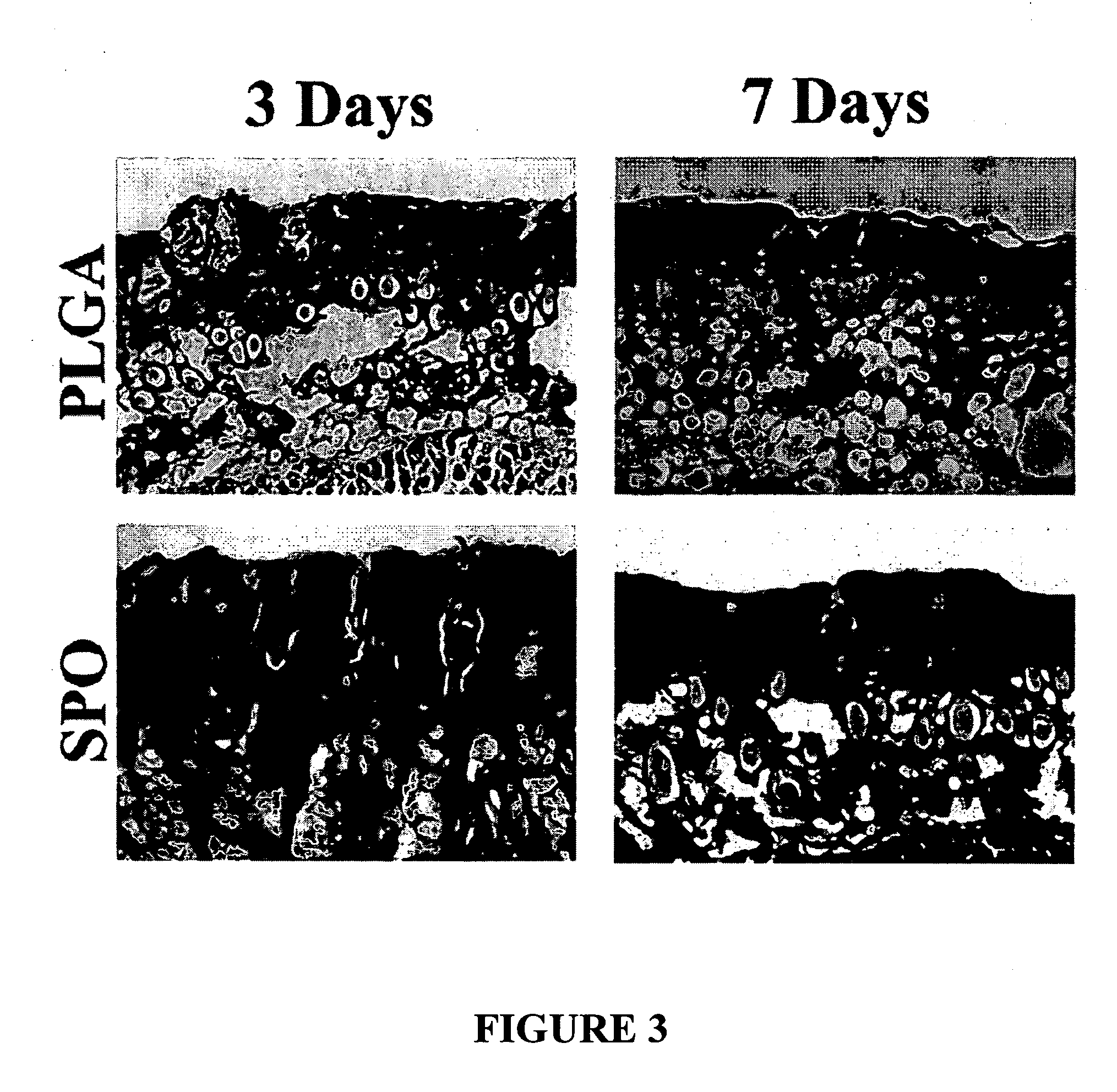Oxygen-generating compositions for enhancing cell and tissue survival in vivo
a cell and tissue survival and composition technology, applied in the field of hypoxic tissue treatment in vitro and in vivo, can solve the problems of limited oxygen diffusion, cell or tissue components that cannot be implanted in large volumes, and use of oxygen rich fluids and angiogeneic factors have only partially succeeded in achieving clinically applicable large tissue mass survival, and achieve the effect of enhancing the oxygenation of the tissu
- Summary
- Abstract
- Description
- Claims
- Application Information
AI Technical Summary
Benefits of technology
Problems solved by technology
Method used
Image
Examples
Embodiment Construction
[0026]Subjects that can be treated by the methods and compositions of the present invention include both human subjects and animal subjects (including but not limited to other mammalian subjects such as dog, cat, horse, cow, sheep, rabbit, goat, pig, monkey, etc.).
[0027]The disclosures of all patent references cited herein are to be incorporated herein by reference in their entirety.
A. Compositions.
[0028]Any suitable biodegradable polymer can be used to carry out the present invention, including but not limited to poly(lactide)s, poly(glycolide)s, poly(lactide-coglycolide)s, poly(lactic acid)s, poly(glycolic acid)s, poly(lactic acid-co-glycolic acid)s, poly(caprolactone), polycarbonates, polyesteramides, polyanhydrides, poly(amino acid)s, poly(ortho ester)s, polycyanoacrylates, polyamides, polyacetals, poly(ether ester)s, copolymers of poly(ethylene glycol) and poly(ortho ester)s, poly(dioxanone)s, poly(alkylene alkylate)s, biodegradable polyurethanes, as well as blends and copolyme...
PUM
| Property | Measurement | Unit |
|---|---|---|
| time | aaaaa | aaaaa |
| diameter | aaaaa | aaaaa |
| diameter | aaaaa | aaaaa |
Abstract
Description
Claims
Application Information
 Login to View More
Login to View More - R&D
- Intellectual Property
- Life Sciences
- Materials
- Tech Scout
- Unparalleled Data Quality
- Higher Quality Content
- 60% Fewer Hallucinations
Browse by: Latest US Patents, China's latest patents, Technical Efficacy Thesaurus, Application Domain, Technology Topic, Popular Technical Reports.
© 2025 PatSnap. All rights reserved.Legal|Privacy policy|Modern Slavery Act Transparency Statement|Sitemap|About US| Contact US: help@patsnap.com



